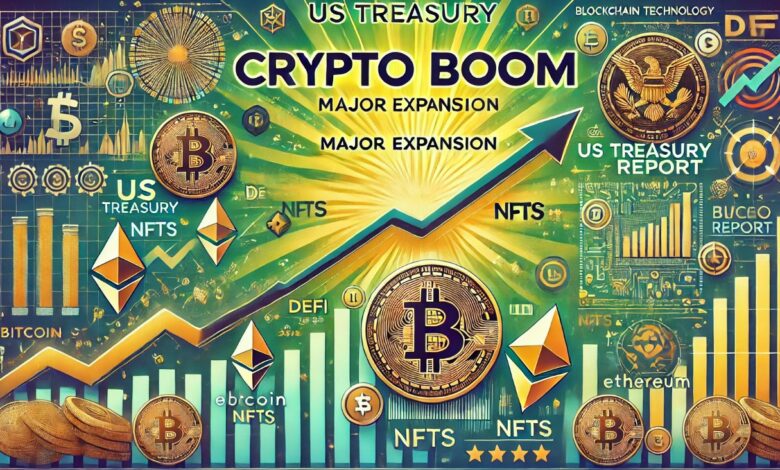
In a recent analysis, the United States Treasury Department highlighted a notable expansion in pivotal segments of the cryptocurrency ecosystem. This growth has significantly influenced the demand for short-term Treasury bills (T-Bills), which are considered low-risk investments, secured by the full faith and credit of the US government.
The Impact of $120 Billion in Stablecoin Collateral on US Treasuries
The Treasury’s detailed report reveals that digital assets, while emerging from humble beginnings, have experienced rapid expansion. This growth encompasses both native cryptocurrencies such as Bitcoin and Ethereum, as well as stablecoins. However, despite heightened market activity, the report indicates that the adoption of cryptocurrencies by households and industries is still primarily confined to investment purposes.
Interestingly, the report underscores that the market capitalization of digital assets remains modest when juxtaposed with other financial and real assets. This suggests that the growth of crypto assets has not significantly diminished the appetite for traditional investments like Treasuries, thereby not yet undermining the position of conventional safe-haven assets.
The report outlines two main areas of interest in digital assets. First, Bitcoin is increasingly being recognized as a store of value, often dubbed “digital gold,” particularly within the decentralized finance (DeFi) ecosystem. Secondly, it points out that speculation has substantially fueled the rise of various digital tokens, including stablecoins, which have quickly captured the attention of investors seeking assets with stable, cash-like qualities.
Furthermore, the Treasury highlights the crucial role stablecoins now play within digital asset markets, revealing that over 80% of all crypto transactions involve a stablecoin. The report estimates that around $120 billion in stablecoin collateral is directly invested in Treasuries, showcasing a solid connection between the cryptocurrency world and traditional finance.
Tokenization: A Revolutionary Shift in the Financial Landscape
Tokenization, the process of digitally representing assets on a blockchain, has emerged as a revolutionary force in the financial sector, particularly with the recent surge in growth and adoption. Prominent asset managers, such as BlackRock, have begun investing in this arena, utilizing platforms like the Ethereum blockchain.
The report outlines numerous advantages of tokenizing US Treasuries, including enhanced clearing and settlement processes, increased transparency, greater accessibility, improved liquidity, and fostering innovation. However, while the potential benefits are substantial, the Treasury emphasizes the necessity for a cautious approach to mitigate any potential financial stability risks, given the still relatively small size of the tokenized asset market.
The report also cautions that the rapid growth and widespread adoption of tokenization could introduce instability if not managed prudently. It advocates for the development of a unified ledger or highly interoperable systems to enhance transaction efficiency and reduce systemic inefficiencies. Additionally, it underscores the importance of having a central authority, such as a central bank, to oversee regulatory compliance within the tokenization sector.
As the digital finance landscape continues to evolve, the report underlines the importance of maintaining regulatory oversight and fostering innovation to ensure a balanced and secure financial ecosystem.







